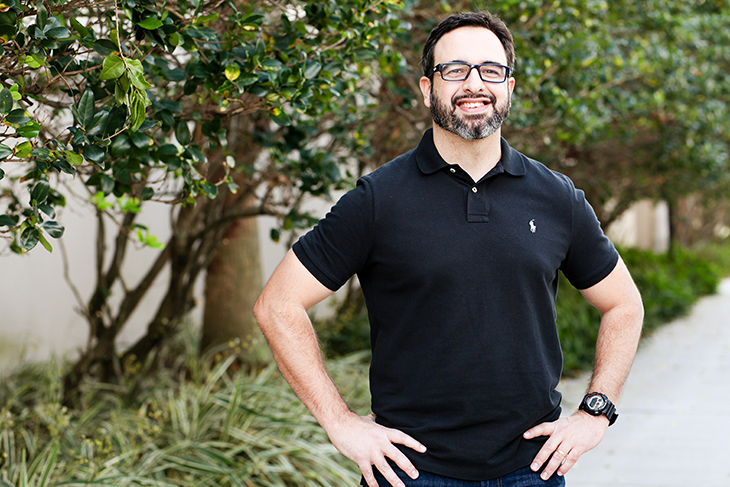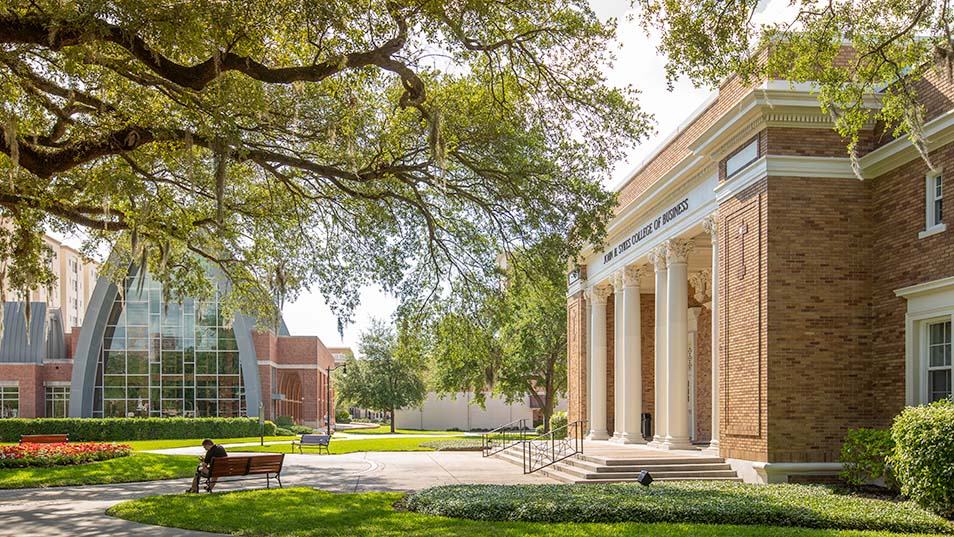Published: January 15, 2019
The UT Guide: Tapping into Faculty Wisdom
UT faculty offer their advice on a variety of topics in a Winter 2019 UT Journal article, “The UT Guide to…” Featured here are two of the six articles; find the others online in the UT Journal.
Working out more efficiently
Life is busy, and for many of us, one of the first activities we nix is a regular workout. Who has time to get it in?
But according to Eduardo De Souza, assistant professor of health sciences and human performance, if you work out right, you may need less time than you think.

According to Eduardo De Souza, assistant professor of health sciences and human performance, an efficient workout involves HIIT, or high intensity interval training. Studies show that rather than walking or running for 40 minutes, you could do short bouts of more intense exercise and get the same (or better) results.
“We know that if you work out at least twice a week, you produce benefits for your health,” said De Souza, whose research has covered molecular, morphological and functional changes in response to several training regimens and nutritional interventions.
For best results, De Souza recommends doing HIIT, or high intensity interval training. Studies show that rather than walking or running for 40 minutes, you could do short bouts of more intense exercise and get the same (or better) results.
De Souza said if you do three or four intervals where you sprint for 15 seconds, followed by a two minute active rest period (walking or running at a slower pace), you could finish your workout in as little as 10 minutes.
“That would be enough,” said De Souza.
What’s more, researchers found that in people who were new to exercise, HIIT increased muscle mass as well. Which is good, since muscle expends more energy than fat.
For this reason, De Souza recommends strength training over cardio.
“Best scenario would be to combine both cardio and strength training, but if you only have time to do one, do strength training,” said De Souza. “If you’re going to do cardio, do HIIT, because the high intensity can increase muscle mass.”
Cryptocurrency 101
Tim Smith, assistant professor of information and technology management, likens the furor over cryptocurrency to the excitement when the internet was new.
“I’ve been around long enough to have experienced when the internet was new,” said Smith. “Not since that time have I seen a technology that has the potential to be as disruptive to business.”

Tim Smith, assistant professor of information and technology management, likens the furor over cryptocurrency to the excitement when the internet was new. “Not since that time have I seen a technology that has the potential to be as disruptive to business.”
How did this all start?
Bitcoin was first introduced in a paper by Satoshi Nakamoto in 2008, which he released to a discussion board. No one knows who this person is, even now. The paper brought a lot of different ideas together to create something truly unique.
What is cryptocurrency?
It's a digital currency. It’s not backed by any government. It can be used to make purchases. We’re seeing it used as an investment vehicle for many people. Bitcoin is the first cryptocurrency, but there are now more than 2,000 different cryptocurrencies. Some of them may be classified as scams, or they won’t survive the test of time. But some of them are really interesting experiments in adding new functionality that doesn’t exist in Bitcoin.
What gives it value?
The dollar has value because of decree, so we call it a fiat currency. It’s moved away from being backed by something like gold. Now it’s not backed by anything other than government decree. It’s also obviously a social construction, because if we stop believing in it, it has no intrinsic value. It’s only paper and ink until we all believe in it. Similarly when we’re talking about something like Bitcoin, as long as we believe in it, it can be used in exchange. The issue now is, do we believe in it?
What is affecting the price?
What we’re seeing now is really a supply and demand interaction creating the price. Bitcoin has scarcity. Roughly 17 million Bitcoins have been released, and there’s only ever going to be 21 million. And we have a number of people wanting to invest in it. So the combination of this demand with the limited supply sets the price. Our current price is a little over $6,000 per Bitcoin. It’s gone as high as $20,000.
How are people using it?
Some of the initial use we’re seeing is in developing nations. In those countries we don’t have strong institutions like we have in the U.S. But if you have a mobile phone, you can create your own “bank account” through a mobile application and there’s no bank that needs to support it, but in a sense it behaves just like a bank account.
What can you spend it on?
There’s a list of sites that accept it, they come and go. One of the interesting examples, in January KFC Canada had a special Bitcoin Bucket, and you could only purchase it with Bitcoin. Their ad campaign said, “We don’t know exactly what Bitcoins are, or how they work, but that shouldn’t come between you and some finger lickin’ good chicken.” That’s the next challenge ahead: how to use this. We’re at that stage now, where it’s going to be a success or a failure based on our ability to move from this idea we’re investing in, to one we use in our daily lives.
UT will be offering a graduate-level cryptocurrency/block chain course this summer.
The additional articles in this series include the following:
- The Flu Vaccine, by Susan Berg, associate professor of nursing and a family nurse practitioner
- Buying Beautiful Art, by Francesco Bacci, associate professor of art and design
- Using Your Smart Phone in a Smart Way, by Mia Plachkinova, assistant professor of cybersecurity
- Reducing Single-Use Plastics in Your Daily Life, by Dan Huber, professor of biology
Read the complete series in the UT Journal.
By Kiley Mallard



